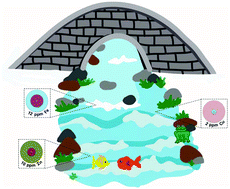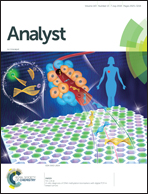Quantitative colorimetric paper analytical devices based on radial distance measurements for aqueous metal determination
Abstract
Here we report a new microfluidic paper-based analytical device (mPAD) for quantifying metals in water. Metals represent an important class of water contaminants that come from a variety of sources including mining, transportation, manufacturing, waste management, and energy production. Current technologies for quantifying aquatic metals in water are expensive, relatively slow, tedious, provide inadequate performance, and are difficult to use in a field setting. As a result, a need exists for simple, portable, power-free measurement tools that enable rapid in-field quantification of aquatic metals. The reported metal test cards, referred to as the On-Target Water Chemistry test cards, represent a major improvement over previously reported linear distance-based detection systems comprised of paper. With the On-Target approach, the sample flows outwards radially and reacts with colorimetric complexing agents, significantly reducing assay time. The diameter of the resulting color formation is directly proportional to analyte concentration. The On-Target cards were used for detecting copper, iron, and zinc with detection limits as low as 0.1 ppm in ∼3 min and single ppb in combination with a membrane pre-concentration system.



 Please wait while we load your content...
Please wait while we load your content...
